Several years ago, Melissa was connected to Jerome Feaster through a mutual friend, Bricky who manages the historical farm at Morningside Nature Center here in Gainesville, Florida. She’d heard about his family’s variety of heirloom mustard greens that had been saved for many years, since at least around the time of the Civil War, if not earlier.
Just prior to Jerome meeting Melissa and learning about Working Food’s (then Forage Farm for those that knew us back then) Southern Heritage Seed Collective program (SHSC), Jerome had sent seed and a box full of freshly harvested winter greens to Seed Savers Exchange (SSE) in Iowa. The staff were so excited, in the dead of a cold Iowan winter to get a box of fresh greens. Read about their cooking adventures in their seed lab! Melissa later heard the stories re-told by SSE staff, as she traveled there many times to learn about seeds and variety preservation. SSE had never seen anything like it before, and told Jerome it was indeed a unique variety, officially offering the mustard its own “certification” as a unique heirloom variety – the Feaster Family Mustard, accession #131798.
Working Food’s role in all of this, was to share this unique regional variety with as many growers as possible, ensuring its long term survival. Although Jerome has two grandsons and neighbors who grow it from time to time, there is no guarantee that the family heirloom will be carried on. Sadly, this is a typical story – great regional heirlooms in the care of an aging grower, with no one committed to carrying them on. We heard it time and again in the stories of collard varieties that are now part of the The Heirloom Collard Project.
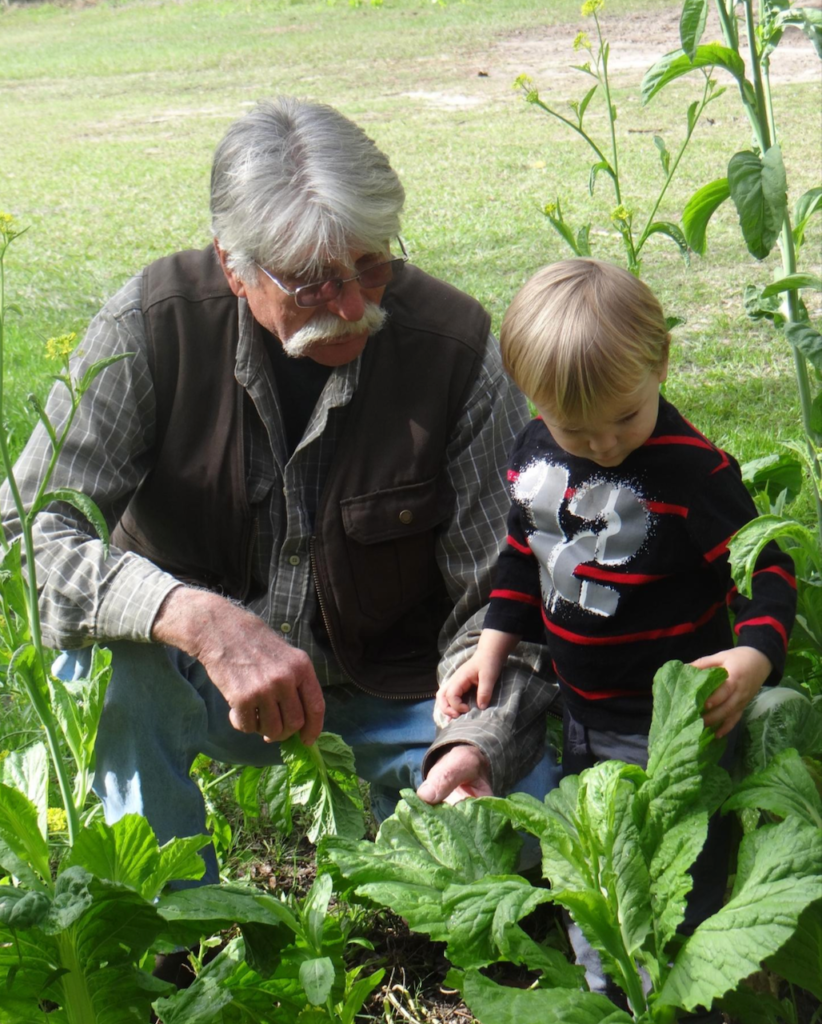
Jerome and one of his grandsons inspecting a crop of volunteer mustards.
We harvested as many seeds as possible from Jerome’s small garden in rural Shiloh (just outside of Micanopy, watch the video here) and the Morningside Nature Center garden where they had been saved by Bricky as well. Around 2019, we were able to harvest, package, and distribute the seed and the story. It slowly gained popularity among locals and was featured in the local press. During the pandemic, seed companies we work with like SSE, Southern Exposure Seed Exchange and Sow True Seed, reached out desperate for bulk seed to keep up with the surge in demand for seeds. One variety we had in abundance was the mustard! What a great opportunity to send even more out in the world by sending it off to seed companies (whose values align with ours) who could reach many more gardens and farms!
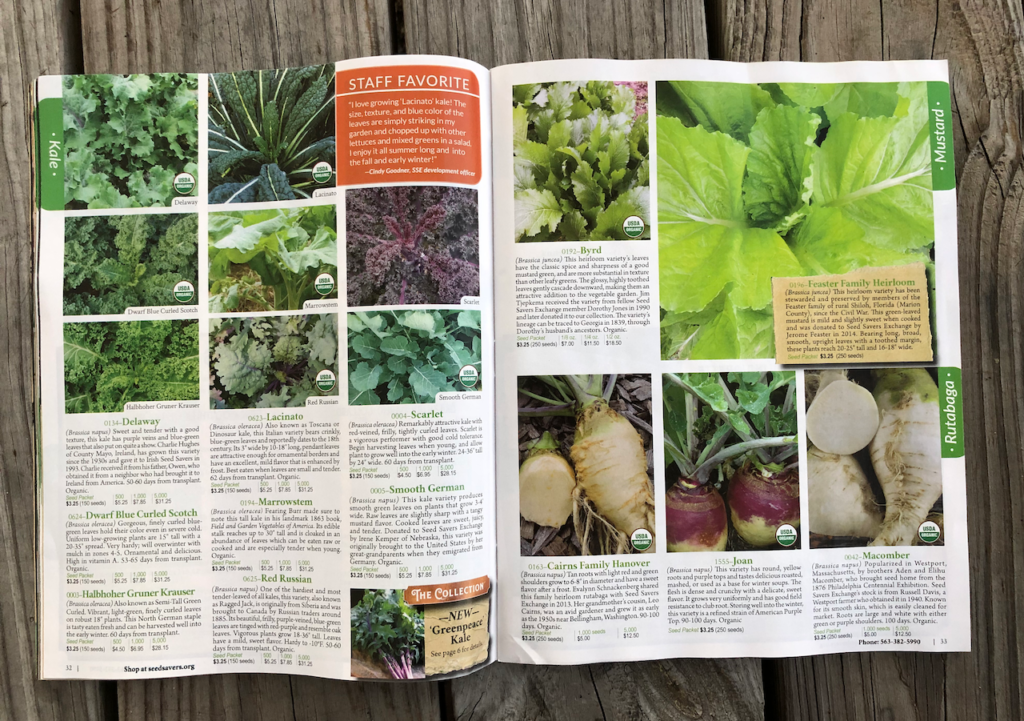
Feaster Family Heirloom Mustard debuts in the Seed Savers Exchange 2020 catalog.
Now it’s spreading all around like seeds do. We’ve been responsible for all of that- bringing it to seed swaps, selling bulk seed to companies, and preaching its uniqueness to anyone who will listen! We’ve lost track where it’s at- a quick Google search reveals quite a few places selling the seeds, and who knows how many growers are saving their own seeds, adapting it to their climate and growing conditions.
We sent some seed to our farmer friend Nat Bradfod in South Carolina a few years ago. He is famously known for the Bradford Family Watermelon, a unique and superb southern variety famed for its sweetness, but nearly lost to time and the erosion of family varieties in favor of commercial ones. Nat loves a good southern heirloom and recently texted Melissa raving about them! “I have to admit these mustards probably created the biggest WOW I can remember in a very long time! Chefs are going to lose it over this! Heck, I’m still reeling”. He sent them off to high end restaurants: Husk in Savannah, GA and Hendrix in Colombia, SC.
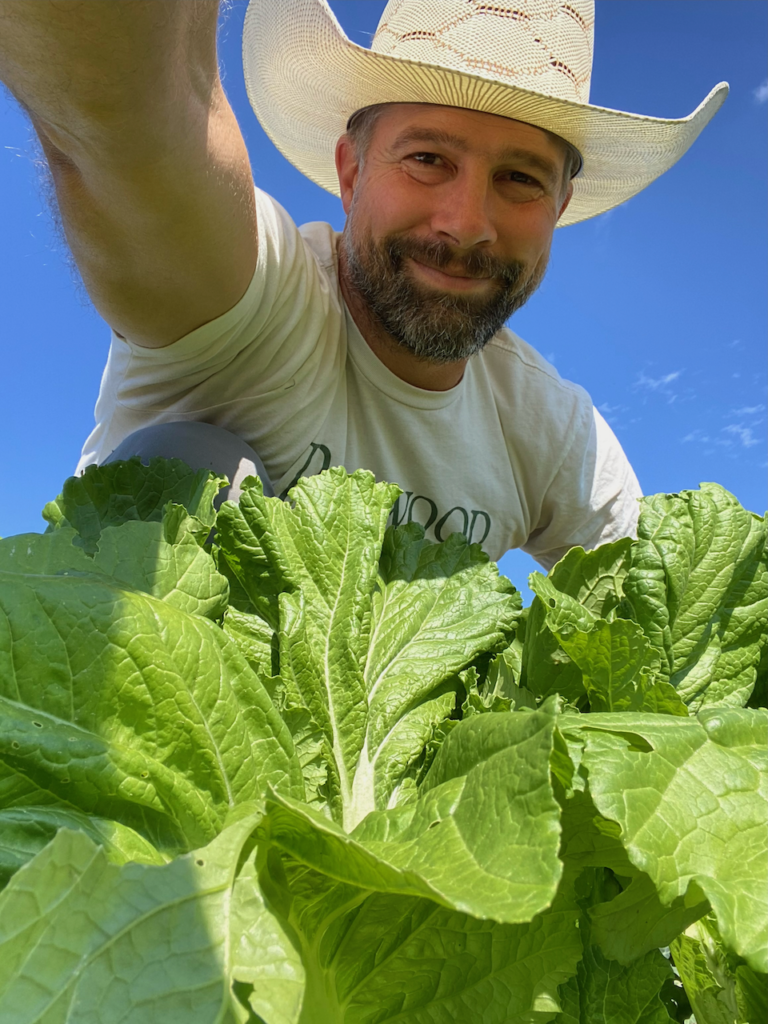
Nat Bradford happily taking a selfie of his crop of Feaster Family Heirloom Mustards growing in Sumter, SC. Adapting to his climate, he is saving seeds each season.
Hendrix recently featured their dish on Instagram: braised pork cheeks, pappardelle (pasta), Feaster Family Mustard pesto, Meyer lemon and Oaxaca cheese! Jerome called up the restaurant to get the recipe, excited that his mustards were gaining even more accolades. What’ more, Dr. David Shields was given a bunch from Nat who farms nearby, and when Shields raved about them as well, it amplified this humble green from the little town of Shiloh, Florida even more. Dr. Shields is an author, culinary historian of the South, and an avid food connoisseur. So a rave review by Dr. Shields is really exciting for people like us!
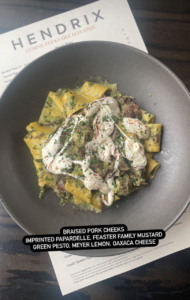
Hendrix menu item featuring pesto made with Feaster Mustards from Nat Bradford’s Farm.
“Heirloom Greens Hall of Fame: Feaster Family Mustard (as posted by Dr. Shields)
I recall a devotee of turnip greens informing me that he would endure a half bucket of sand in the turnip greens pot rather than endure the rude odor and fiery bite of mustard greens. I half understood what he was about. The Florida broad leafed mustard has little finesse when it comes to flavor. But there has been many a meal of curly (aka ostrich plume) mustard that I thought vibrant, bracing, and not too odiferous. This weekend, however, I tasted for the first time the old Feaster Family mustard from Florida. Melissa DeSa had told me two years ago that this was something I should have on my radar. A family strain created in the late 19th century. Nat Bradford had grown it out and said it was a revelation. Thank you, Nat, for sharing.
It looks different than any other mustard with its fat ribs of delicate flesh. There is no bitter bite, but rather a pleasing tingle. The odor cooking is not crude. But I found that I loved braising the greens more than boiling them. It was up there with rapini as an experience. Touch of olive oil, some minced garlic. Heaven. If I can get it, this is the kind of mustard I want from now on.”
The truly unique feature of this mustard, besides the flavors described by Shields, is the enormous midrib that is crunchy, tender, juicy and so flavorful. We’ve enjoyed many snacks in the garden munching on those stems, which are great dipped in hummus or just as is. Chopped up and added to the pot of greens, they keep their texture and add some crunch. The spicy greens mellow when cooked and go well in nearly anything- soups, stew, lasagnas, curries. A fresh leaf on a sandwich adds some kick.
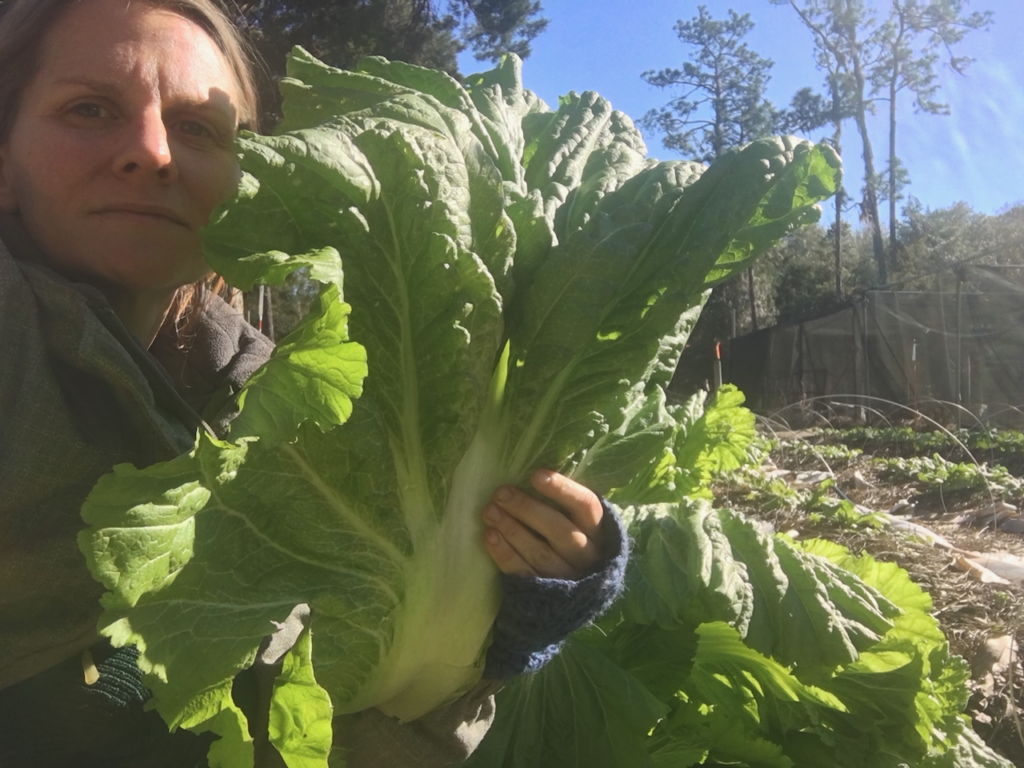
Look how enormous the leaves get, but also that deliciously large mid rib!
Our friends at GROW HUB who seem to equally love collards and mustards, find plenty to do with them. Gwen has a keen eye for when the bright green leaves start showing up in our gardens in the fall – her eyes light up and her clippers come out. If we’re not careful it looks like a deer has run through the garden, she loves them so much! Like many winter greens, if you cut the outer leaves, leaving the new inner ones intact, they will keep producing greens for a long time. Feaster Mustards easily go to seed and if you let them do it once in your garden, they may come up every year! Since saving seed a couple of times, many have naturally saved themselves in the soil seed bank, reliably giving us greens each year with little effort.
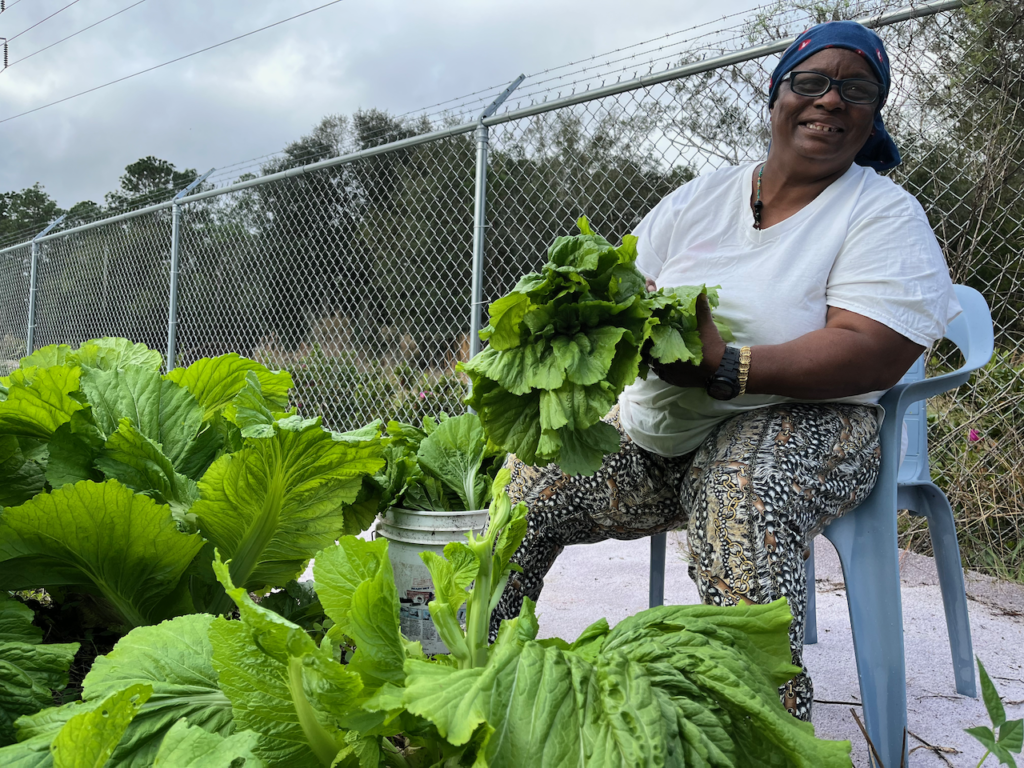
Gwen can’t get enough of these greens when they are in season! Our seed gardens located at GROW HUB always have a crop of volunteer mustards that feed the humans and the bees for months.
Here’s a recipe for creamed mustards from Justin Langer, and Jerome’s traditional family recipe can be found below. It seems there is no limit to how versatile these can be, from traditional Southern methods that typically include some kind of smoked meat, to Hendrix’s spin using them in a pesto. Dr. Shields prefers them braised over boiled, while the traditional Feaster way is boiled.
With Shield’s enthusiasm, Melissa is in the process of writing up a nomination form for Feaster Family Mustards to be boarded the Slow Food Ark of Taste. We feel relieved now, that this rare and very regionalized heirloom now has enough love, appreciation, and distribution for future generations. That’s true resilience in our books.
A Feast of Feaster Family Heirloom Mustards Recipe
Jerome’s Family Recipe
Ingredients:
35-30 leaves of greens, a large handful
4-6 pieces of smoked bacon, or another smoked meat
salt
Harvest leaves when you can’t wait any longer. Wash greens twice. Strip from midrib and tear out or cut into small pieces. You may cut stems into small pieces and cook separately. Stems will have the consistency of cooked celery. Put 4-6 pieces of smoked bacon or other smoked meat for seasoning into a six quart pot. Add a cup or two of water and salt, bring to boil, and lower to medium heat for 30 minutes. Add greens to water a few pieces at a time. As they wilt, stir and add more greens, lower to a slow simmer. Cover and cook until greens achieve the tenderness and flavor you desire. About an hour if you want the greens to take on plenty of the bacon flavor. Drain, avoiding mashing the greens in the process, and serve. Serving with sweet potatoes and ham is a popular, as is serving with a vinegar hot sauce.







